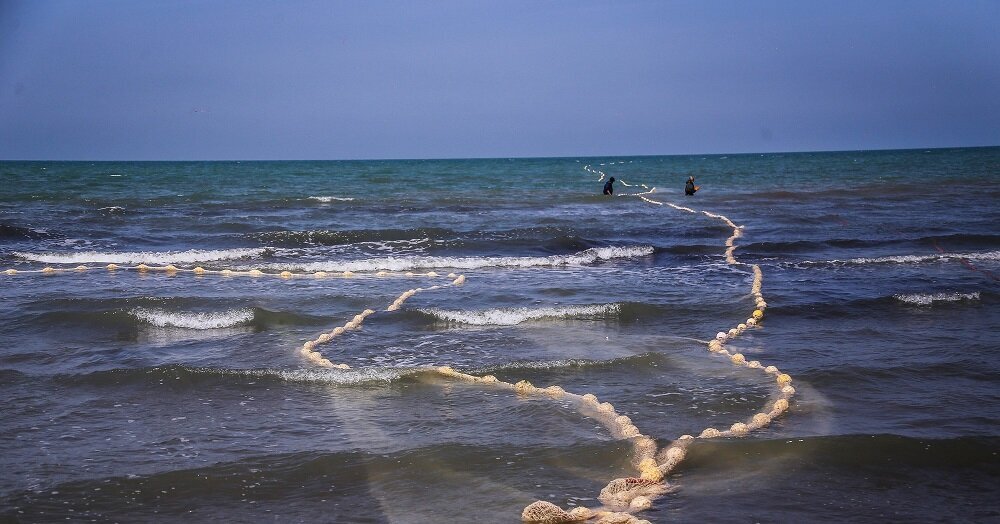Caspian Sea level shrinks by 5-10cm on year

TEHRAN – The average annual water level of the Caspian Sea has decreased by about 5 to 10 cm compared to a year before, according to the network information of the Ministry of Energy.
Various factors such as the volume of water entering from the rivers to this catchment area and the amount of rainfall and the rate of evaporation have a determining role in the water level of the Caspian Sea, Behzad Layeqi, head of the National Institute for Oceanography and Atmospheric Science said.
Lamenting that the water level of the Caspian Sea has been decreasing over the past 30 years, he said that in 1977, the water level of the Sea fell sharply and until 1995 experienced an increasing trend; But since then, over the past 26 years, the seawater level is on a downward trend.
It is now one meter above the level of this lake in 1977 - which was the lowest level of the Caspian Sea during the last five decades - and if the same trend continues, it will again reach its lowest level in less than 10 years, he highlighted.
Long-term forecasts based on climate change scenarios show a 4-6 meters drop in the lake's water level over the next 30 to 50 years, he said, ISNA reported on Friday.
The declining water level of the Sea, in addition to the problems it poses for ports and shipping in this catchment area, has negative effects on ecologically protected areas, including wetlands, as well as the aquatic life, due to the increased salinity and temperature of the water, he stated.
Pointing to another factor in reducing the water level of the Caspian Sea, he noted that the largest river that enters the Caspian Sea is the Volga River, which supplies about 85 percent of the Sea, but in recent years, several dams have been built on the riverbed its water consumption in various parts has reduced the volume of water entering the Caspian Sea.
He further suggested that granting the water right of the Sea and its rivers is one of the most important measures that all Caspian littoral countries can take in order to prevent the water level reduction.
The Caspian Sea is the largest enclosed inland body of water on Earth by area. It is bounded by Kazakhstan to the northeast, Russia to the northwest, Azerbaijan to the west, Iran to the south, and Turkmenistan to the southeast. The sea has an area of 600,384 square kilometers and a coastline of 7,000 kilometers.
Hosting 400 aquatic species and holding third place in terms of oil and gas reserves under its bed after the “Persian Gulf” and “Siberia” has doubled the value of this basin, while sturgeon are the most important inhabitants of the lake.
Hosting 400 aquatic species has doubled the value of Caspian Sea.Researchers believe that 80 percent of the pollution in the Caspian Sea is related to the flow of water from the Volga River and other western rivers from the Republic of Azerbaijan.
Frequent oil spills in the coastal areas of Azerbaijan and Kazakhstan, the entry of waste of over 40 factories and refineries into the sea, the decline, and extinction of the Caspian Sea aquatic species since 1990, are among the main challenges faced by the Caspian Sea.
The National Institute for Oceanography and Atmospheric Science has conducted extensive studies in this catchment area, including more than 10 research patrols in the Caspian Sea, obtaining a certificate and setting up a trusted laboratory of the Department of Environment, identification of high-risk points for cracking waves on the shores of the Sea.
Moreover, sampling of bed sediments in the deep waters of the southern Caspian Basin, publication of more than 80 scientific documents on the Caspian Sea, study, measurement, and modeling in Gorgan Bay and presented scientific and executive solutions for the sustainability of its ecosystem and more than 70 research projects in the southern part of the Caspian Sea are other actions of researchers at the Research Institute.
Grappling with poor waste management
Ahmad Reza Lahijanzadeh, deputy chief of the Department of Environment (DOE) for the marine environment, said in August 2020 that waste management in the Caspian Sea is on the verge of crisis and seriously threatens the Sea’s environment.
In addition to waste, leachate enters the sea through rivers or rainfall, and because the severity of leachate pollution is very high, it imposes a serious threat to the marine environment, he lamented.
Noting that the release of urban and rural wastewater into the sea is another problem the Caspian Sea is struggling with, he clarified that a number of cities in the northern provinces either do not have a wastewater treatment plant.
Stating that plastics and microplastics are among the issues that can be a threat to humanity in the next 10 years, he noted that erosion makes microplastics out of plastic waste, and 70 percent of these are transferred directly to the seas, and therefore can enter the aquatic and human food cycle, causing damage to human health and marine biodiversity.
FB/MG
Leave a Comment